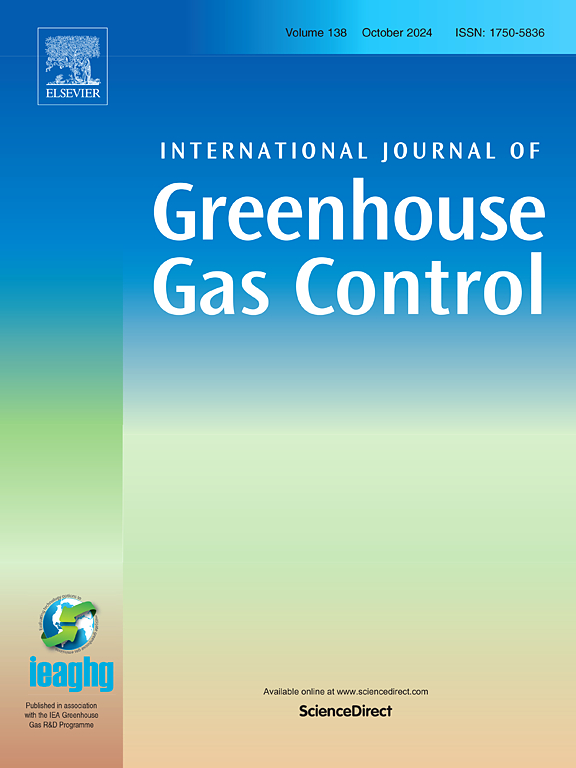Assessment of CO2 sequestration potential and economics in Colorado, USA
IF 4.6
3区 工程技术
Q2 ENERGY & FUELS
International Journal of Greenhouse Gas Control
Pub Date : 2025-02-01
DOI:10.1016/j.ijggc.2024.104301
引用次数: 0
Abstract
Carbon Capture, Utilization, and Sequestration (CCUS) is widely considered essential to mitigating anthropogenic climate change. This study, supported by the regional U.S. Department of Energy (DOE) initiative, Carbon Utilization and Storage Partnership (CUSP), evaluates the potential, progress, challenges, and economics of CCUS in Colorado, USA. We examine carbon capture, transportation, and storage potential in oil and gas reservoirs, saline aquifers, and CO₂-enhanced oil recovery (EOR) operations. Additionally, we conduct an economic analysis and discuss the leakage risks posed by legacy wells, which may impact the safety and security of CO₂ storage. It was found that the nine facilities with the greatest CO2 emissions in Colorado overlie the Denver-Julesburg (DJ) Basin, and half of these are in the Wattenberg field. The DJ Basin, especially the Wattenberg field, is the top-ranked carbon storage target in Colorado for this reason, as well as because: 1) low-permeability formations (Niobrara and Codell) can be used for enhanced oil recovery, and 2) stacked saline aquifers, such as the Dakota, Entrada, Fountain, Lyons, and Morrison Formations, have a high capacity for carbon storage. Through a refined analysis of the efficiency factor, our study provides more accurate assessments of storage capacity, demonstrating that saline aquifers possess significantly higher carbon storage capacities than oil and gas reservoirs. In the Wattenberg field, simulation studies demonstrate that approximately 18 % of injected CO₂ can be stored over a four-year CO₂-EOR process. Additionally, CO₂-EOR reduces overall CO₂ emissions per barrel of oil by 76 % compared to conventional production methods. Economic analysis indicates that CO₂-EOR is an effective approach to offset the high costs associated with CCUS.
求助全文
约1分钟内获得全文
求助全文
来源期刊
CiteScore
9.20
自引率
10.30%
发文量
199
审稿时长
4.8 months
期刊介绍:
The International Journal of Greenhouse Gas Control is a peer reviewed journal focusing on scientific and engineering developments in greenhouse gas control through capture and storage at large stationary emitters in the power sector and in other major resource, manufacturing and production industries. The Journal covers all greenhouse gas emissions within the power and industrial sectors, and comprises both technical and non-technical related literature in one volume. Original research, review and comments papers are included.

 求助内容:
求助内容: 应助结果提醒方式:
应助结果提醒方式:


